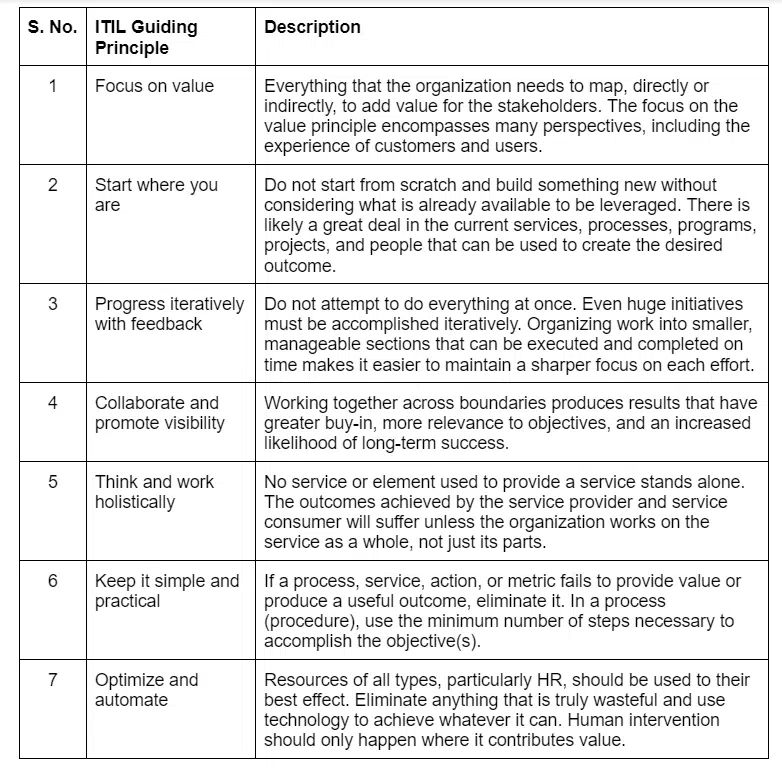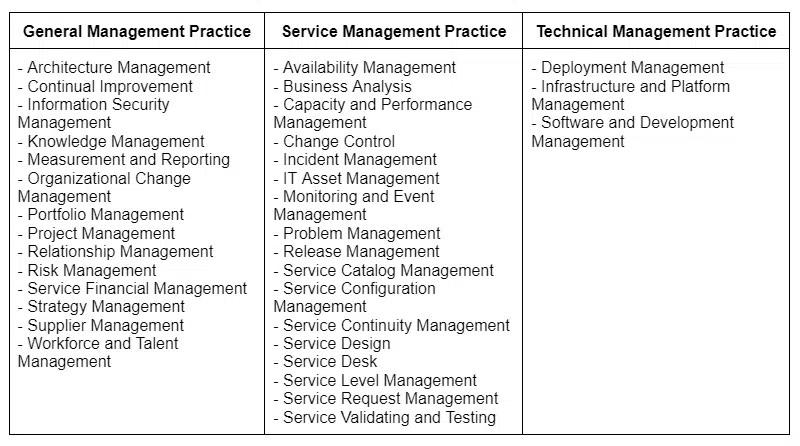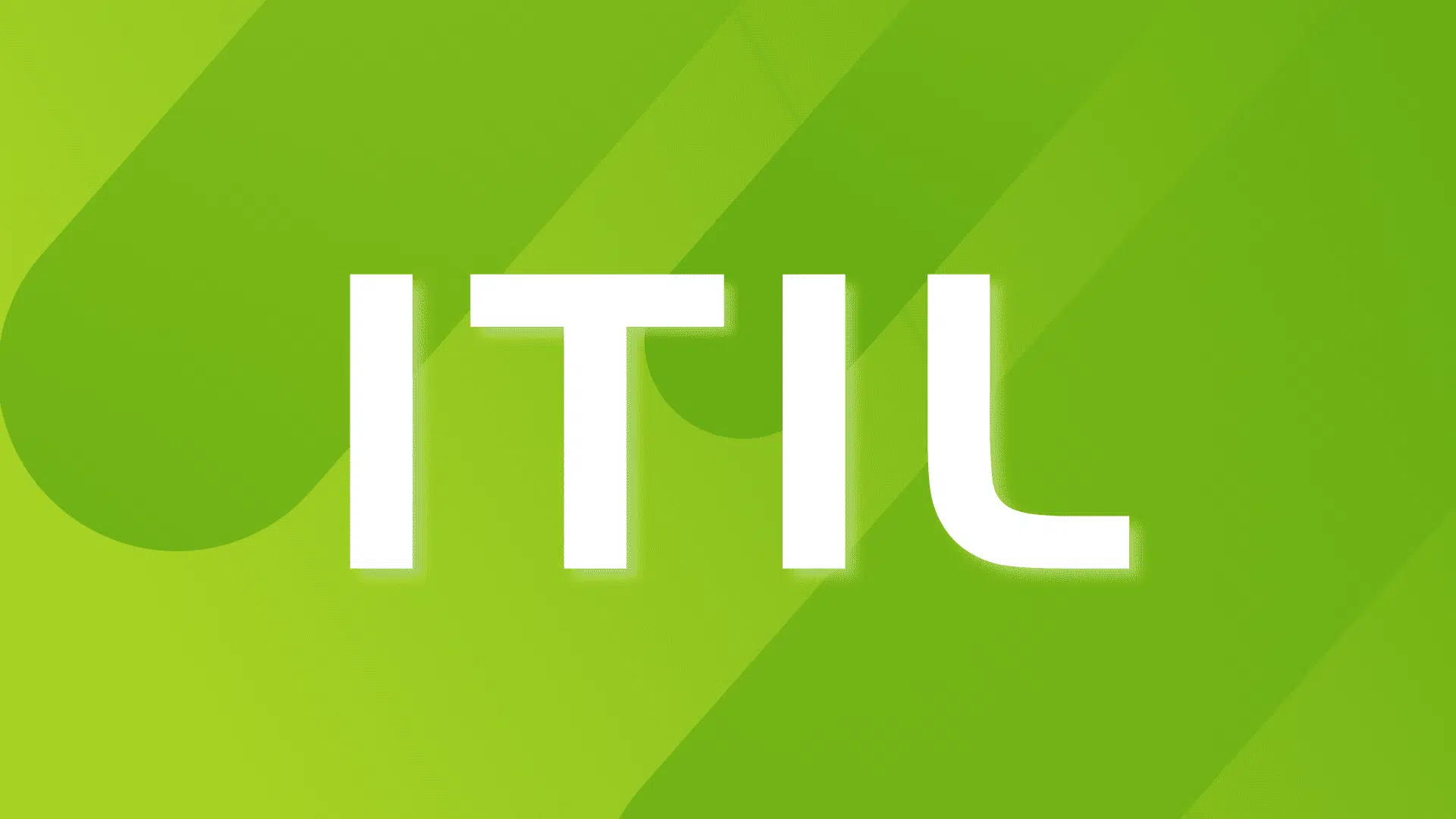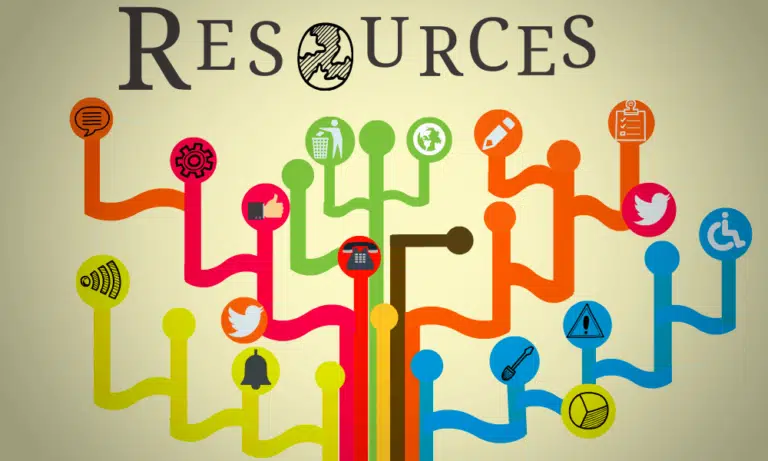Businesses create value for themselves and their customers through services. The Information Technology Infrastructure Library (ITIL) provides a structured approach and guidelines that help organizations take advantage of digital transformation and create the value their customers need.
ITIL is the most widely used guidance in IT service management; it integrates modern and emerging practices with established and proven know-how. ITIL version 4 is the latest version of ITIL. It includes best practices in the IT industry that have been developed based on research and development to meet the key requirements of continuity, innovation, flexibility, and value.
ITIL is a framework for delivering services to IT industries. It is a collection of procedures that help service providers provide the best services to the IT industry. ITIL guidelines help deliver quality IT services. It helps businesses improve customer relations and build a stable software system that allows growth and is adaptable to changes.
Its best practices help businesses standardize their service management process. It reduces operational costs, improves customer satisfaction, and increases employees’ morale. It helps manage risk and reduces service disruption.
ITIL aims to provide a predictable IT environment, deliver predictable customer service, and align all processes to improve efficiency. It covers popular IT services: cloud services, backup, network security, data processing, and storage, managed print services, IT consulting, help desk support, etc.
In 2019, ITIL 4 was released, focusing on automating processes, improving service management, and integrating the IT department into the business.
History of ITIL
The UK Government’s Central Computer and Telecommunications Agency developed the ITIL in 1980 due to the involvement of government agencies and the private sector in IT services.
For over 40 years, ITIL has led the IT service management (ITSM) industry with guidance, training, and certification programs.
The ITIL 4 has reshaped the established ITSM practices in the wider context of customer experience, value streams, and digital transformation and embraces new ways of working, such as Lean, Agile, and DevOps.
The aim is to provide a standard set of practices for the benefit of the whole society. It had been known as Information Technology Infrastructure Library, but since 2013 it is referred to as ITIL.
ITIL had 30 volumes until 1989, but it was reduced to nine volumes, then seven volumes, and the current version, ITIL V4, now has five volumes. These five books are known as the five stages of the ITIL service life cycle.
These five stages are
- ITIL Service Strategy
- ITIL Service Design (Design Strategy)
- ITIL Service Transition (Transition Strategy)
- ITIL Service Operation (Operation Strategy)
- ITIL Continual Service Improvement
The ITIL Guiding Principles
ITIL 4 includes seven guiding principles covering organizational change management, communication, measurement, and metrics.
ITIL 4 focuses on integrating IT services in the business and collaboration between IT services and other departments in the organization. It emphasizes customer feedback and improves the processes for satisfying customers’ needs.
They are used to guide organizations in their work as they adopt a service management approach and adapt ITIL guidance to their own specific needs and circumstances. The guiding principles encourage and support organizations in continual improvement at all levels.
These principles are also reflected in many other frameworks, standards, philosophies, and bodies of knowledge, such as Lean, Agile, DevOps, and COBIT, allowing organizations to integrate multiple methods into an overall approach to service management.
These principles are:

ITIL Management Practice
This is a set of best practices for accomplishing an objective. They are broadly grouped into three categories:
- General Management Practices: Originated from business management domains and is adapted for service management.
- Service Management Practices: Developed in service management and ITSM industries.
- Technical Management Practices: Adapted from technology management domains for service management purposes by expanding or shifting their focus from technology solutions to IT services.
The table below shows the various practices.

The ITIL Framework
ITIL 4 provides the guidance organizations need to address new service management challenges using modern technology. It ensures a flexible, coordinated, and integrated system for the effective governance and management of IT-enabled services.
The ITIL framework has two key components:
- Service Value System (SVS)
- 4-Dimensions Model
#1. Service Value System (SVS)
This shows how the various components and activities can work together to facilitate value creation through IT-enabled services.
Let’s quickly distinguish product, service, and value.
- Products are items are services that an organization develops to sell to consumers.
- Services enable value creation by facilitating outcomes that customers want to achieve without the customer having to manage specific costs and risks.
- Value is the perceived benefits, usefulness, and importance of something.
The SVS includes the following components:
- Guiding Principles: These are recommendations to guide an organization in all circumstances, regardless of changes in its goals, strategies, type of work, or management structure.
- Governance: This is how an organization is directed and controlled.
- Service Value Chain: These are activities that an organization performs to deliver a valuable product or service to its consumers and to facilitate value realization.
- Practices: These are repeatable activities that provide the best, most efficient result.
- Continual Improvement: These are recurring activities performed at all levels to ensure that an organization’s performance continually meets stakeholders’ expectations. ITIL 4 supports continual improvement with the ITIL continual improvement model.
#2. The 4-Dimension Model
To ensure a holistic approach to service management, the ITIL framework lists four dimensions from which each component of the SVS should be considered.
These are:
- Organizations and people
- Information and technology
- Partners and suppliers
- Value streams and processes
The complexity of organizations grows continuously. It is important that organizational structures, functioning, roles and responsibilities, a system of authority, communication, etc., are well defined and support the organizational strategy and operating model.
Apart from the skills and competencies of teams and team members, attention should be paid to leadership style, management style, communication skills, and collaboration.
Adopting ITIL Practices
Organizations need all stakeholders on board to implement ITIL. This onboarding includes adopting mindsets, new skills, and training.
Training has a key role in adopting ITIL frameworks.
Currently, Axelos is responsible for conducting ITIL certification exams. Axelos conducts these exams through Accredited Training Organization (ATO). Accreditations are administered by Strategic Examination Institutes (EIs). EIs must be accredited directly by Axelos to offer accreditation to ATOs.
ITIL certification includes ITIL Foundation and ITIL Master Exams. Once you pass the ITIL Foundation Exam, you can attend ITIL Master Exams.
The ITIL Master Exam has two certifications: ITIL Managing Professional (MP) and ITIL Strategic Leader (SL).
The details of ITIL certifications are as follows:
- ITIL Foundation: This certification covers a basic understanding of the ITIL framework and how to use it to enhance IT service management.
- ITIL 4 Managing Professional: You can get this certification after completing the four modules (courses) on ITIL 4. They include:
- ITIL 4 Specialist: Create, Deliver, and Support
- ITIL 4 Specialist: Drive Stakeholder Value
- ITIL 4 Specialist: High-Velocity IT
- ITIL 4 Strategist: Direct, Plan, and Improve
- ITIL 4 Strategic Leader: This certification includes two modules. These courses focus on the relationship between IT and business strategy. They include:
- ITIL 4 Strategist: Direct, Plan, and Improve
- ITIL 4 Leader: Digital and IT Strategy
- ITIL Master: This is the highest credential for ITIL practitioners. To obtain it, you must demonstrate that you have applied ITIL principles and methodologies and achieved desired business outcomes in a real environment.
Why is ITIL Important for Business?
ITIL is an accumulation of methods to harmonize IT systems with business objectives. The process is intended to supply top-notch IT Service Management (ITSM), which is the craft of executing, managing, and offering IT services to meet the demands of a business.
By refining the existing ITSM procedures, ITIL boosts customer happiness, efficiency, risk management, budget objectives, and other business operations.
ITIL is important for any business for the following reasons:
1. ITIL Provides Transparency on Business Costs, Assets, and Values
ITIL implementation provides greater transparency. the current business costs, assets, and what these will be in the future, resulting in value
The ITIL framework recommends that business owners do the groundwork to use ITIL practices by identifying processes requiring improvement, problems that need to be solved, and ways to enhance current IT infrastructure before implementing the framework.
The purpose of ITIL must be defined before changes can be made.
Businesses can implement new processes with a clear view of their current assets and expected costs, allowing them to predict overall spending (and preventing any expenses from going unchecked).
This strategy lets them monitor their IT budget, utilizing more precise metrics for better cost monitoring. This provides correct figures while reducing costs or adjusting the budget, which helps in making decisions.
2. ITIL Endorses Business Change
Implementing ITIL creates an adaptive environment devoted to continual enhancement. In a fast-changing economic situation, reacting to customers’ demands, advances, and necessities is essential.
Implementing ITIL permits businesses to react quickly to changes in their environment through its change management processes. These processes keep organizations IT compliant and monitor and control activities within IT systems and applications.
Maintaining a flexible approach allows a business to stay competitive and dependable. ITIL’s change management process encourages extraordinary creativity, assisting companies to stay ahead of the game and ensure their customers remain satisfied.
ITIL facilitates businesses in adjusting their structure. This system helps eliminate duplication, maximize resource usage, and reinforce primary IT operations.
3. Align IT with the Business via ITIL Training
ITIL lets businesses employ reliable IT services and approaches to improve business operations and plans.
It helps transform IT into a vital component of the enterprise, transforming how they are perceived from an expenditure to a profit-generating ally. This transition allows them to collaborate with other organizational divisions and refine the IT infrastructure.
Lumify (formerly DDLS), a top Australian IT company, provides several courses in ITIL education, furnishing the awareness to adopt and apply these methods in the current business context.
4. ITIL Decreases Risk and Disruption
ITIL helps businesses reduce service disruption, improving disaster response and recovery methods.
Rolling out ITIL enhances operational efficiencies. The framework encourages service desks to take a proactive approach to solving problems, allowing smoother processing and minimal delays. This maintains employee, user, and customer satisfaction and ensures consistent quality results.
ITIL comes with incident and problem management processes, helping businesses to respond to crises and restore services quickly. These procedures allow businesses to get to the root cause of problems, eliminating them and preventing recurrence.
5. ITIL Improves Service Delivery
ITIL practices ensure the business constantly learns from past mistakes and improves its performance to achieve service quality.
ITIL aids companies in avoiding the pitfalls of under or over-investing in technological solutions like network bandwidth, data storage, and cloud computing. Establishing clear criteria and metrics forms a basis for effective business transformation.
ITIL can detect issues and “bottlenecks” in the service process and address and eliminate the fundamental issues instead of addressing symptoms.
Suppose a business is interested in collaborating with or supplying other companies or vendors. In that case, ITIL provides a common standard of quality and assistance, simplifying the process of working together. This mutual structure saves time and energy that would otherwise be spent on teaching or adapting to the IT practices of the other party.
The framework highlights what the service desk can and cannot do, helping employees and users know who to turn to when they need assistance. This eliminates the unnecessary hours that are lost waiting on the IT helpdesk for problems they aren’t responsible for.
ITIL is the most highly recognized system for IT Service Management; customers can trust that the service procedures are dependable, of high quality, and in line with international standards.
Benefits of Using ITIL
ITIL is a prominent system for ITSM that has helped organizations develop a dependable IT management framework which guarantees that IT services are persistently enhanced and that customers receive exemplary service.
The following are key benefits of ITIL:
1. Alignment Between IT and the Business
The ongoing nature of the ITIL lifecycle’s continual service improvement stage ensures service performance optimizations are carried out. IT and business divisions within a firm now work collaboratively due to ITIL.
ITIL mandates that business and IT priorities sync, ensuring that both teams share the same primary objectives. This collaboration increases responsibility and transparency for the company, enabling IT teams to respond to complaints more quickly and provide software earlier.
2. Improved Service Delivery and Customer Satisfaction
IT and other departments will communicate better, so customer service deliveries will quickly improve. ITIL’s overarching best practices are created to keep operating systems performing efficiently and provide users with an excellent experience.
3. Greater Visibility of IT Costs & Assets
Adopting ITIL reduces some IT expenses. Businesses have reported lower overhead expenses due to ITIL. ITIL provides visibility into their expenditure, removing the costs of unused software and other services. Due to ITIL’s metric-based strategies, IT teams gain significant insights into expense data, helping them stay on budget and make critical decisions for expense reduction.
4. Control of Business Risk and Service Interruptions
ITIL assists firms in managing risk. When IT and other departments work together, it is less likely that something will slip between the gaps.
ITIL processes for managing changes, incidents, and problems emphasize preventing service disruptions and responding rapidly to them when they do happen. As a result, teams can provide continuous, high-quality service by reducing these service interruptions. With teams aligned and service outages at a minimum, risks are reduced.
5. Facilitates Stable Business Environment
Organizations that don’t analyze their performance are guaranteed to be lost in the shuffle. With its reliable system monitoring and frequent strategic reviews, ITIL ensures that enterprises will always stay current. ITIL best practices maintain organizations at the top of their industries thanks to their adaptability.
Drawbacks of ITIL
- Training requires expenses and consumes time
- Sometimes ITIL implementation takes a long time
- No short-term return
- No tangible return in short to medium term
- Sometimes, ITIL frameworks can disrupt or negatively affect processes
- Often difficult to quantify the benefits of ITIL
Is ITIL Implementation Worth It?
ITIL is a globally recognized standard in IT Service Management (ITSM). Its framework helps organizations improve their IT services, enhance customer support, and maximize the value of their IT services and products.
It ensures high-quality services by taking customer feedback and enhancing the processes to align with the business goals.
Conclusion
Many organizations worldwide have adopted ITIL frameworks and observed noticeable operation and service delivery differences. With better communication, reduced costs, improved customer service, and fewer service disruptions, the benefits of ITIL reiterate why it is one of the most trusted and utilized service management frameworks.
For an organization to be successful, it must adapt to changing circumstances while remaining functional and effective. This might include changes to the products and services it provides and consumes, as well as changes to its structure and practices.
IT and IT management are expected to be agile in the modern world. ITIL 4 applies to any organization involved with IT services. It brings fresh and forward-thinking ideas to the marketplace and is equipped to deal with the challenges an industry can face.

I am Mohammad Fahad Usmani, B.E. PMP, PMI-RMP. I have been blogging on project management topics since 2011. To date, thousands of professionals have passed the PMP exam using my resources.







